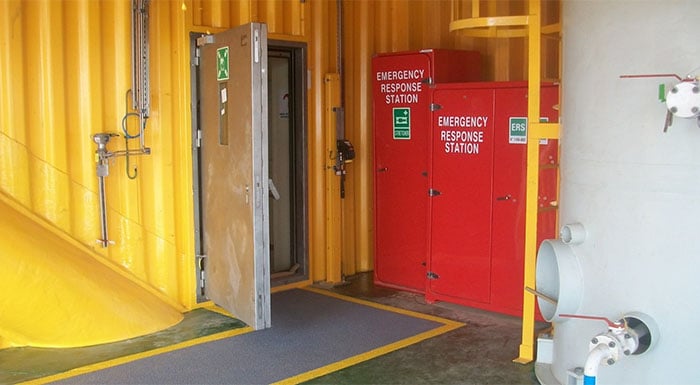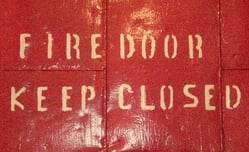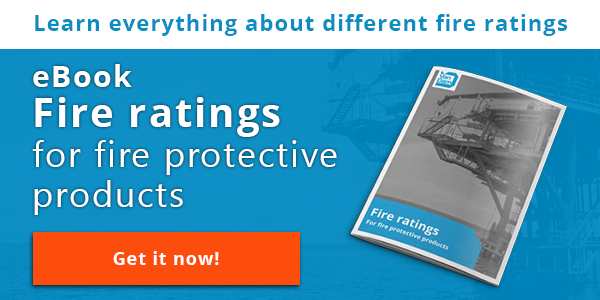
Fire and blast doors save lives and protect equipment. Therefore, designing and constructing a fire and blast rated door is a very thorough and strict process because one needs to take the right standards and norms into consideration. There are several requirements and regulations, or combinations as such, a product has to comply with, but there are also various optional features that can be applied to a door. Subsequently, the finished product is subjected to a process of tests in order to make sure it provides the highest levels of safety in case of fire and explosions.
Regular maintenance, repair and upgrade lead to a longer lifespan of doors and ensure safety in harsh working environments.
Door construction
A fire and blast rated door is constructed out of an assembly of a fire door, a frame, hinges, hardware and an optional vision frame panel. Doors can be categorized into e.g. single hinged, double hinged, sliding, pneumatic operated and electrical operated. During an inspection, all of the parts of doors and types of doors are reviewed separately according to specific norms.
All employees and engineers should pay close attention to a few significant rules regarding fire and blast resistant doors.
Close the door!
 Failure to close the door is the most common mistake made. The reason for workers to obstruct the self-closing mechanism of the door is due to efficiency. Most find it pointless to close the door since they use it regularly during the day. The occurrence of fire seems quite unlikely to workers, thus they find it easier to keep the doors open to pass through quickly. In this way, they fail to see the true necessity of closing the door.
Failure to close the door is the most common mistake made. The reason for workers to obstruct the self-closing mechanism of the door is due to efficiency. Most find it pointless to close the door since they use it regularly during the day. The occurrence of fire seems quite unlikely to workers, thus they find it easier to keep the doors open to pass through quickly. In this way, they fail to see the true necessity of closing the door.
A fire door is only effective during fire and explosion when the door is actually closed. If this is not the case, the door will not provide the safety it was actually designed for. Accordingly, a lot of attention should be paid to the closure of fire and blast proof doors. For this reason, fire doors should always be equipped with a door closer.
Maintain regularly
The frequency of opening and closing a fire door depends on the location of the door on the platform. Some are opened and closed many times a day while others are opened and closed a lot less. The more this process of opening and closing takes place, the more opening and closing cycles, the quicker the performance of fire and blast resistance falls into deterioration. Eventually, it might cause damage to the leaf or the components of the assembly, and/or wear in the hardware (hinges and seals).
For these reasons, it is very important to inspect fire/blast doors regularly depending on the type and day-to-day use.
Free the doorway
Another critical point is the clearance of the doorway from anything that could obstruct or interfere with the operation. During a fire event, such blockages can prevent people from safe and effective evacuation and can even worsen the fire due to the presence of combustible materials such as paper and/or wood.
Long-term benefits
The first and foremost benefit of regular maintenance is to ensure the safety of people and equipment on e.g. oil and gas platforms and petrochemical plants. A Health and Safety engineer has a detailed plan on how to achieve the goals of a fire protection plan, in which regular maintenance is vital.
When maintenance is carried out correctly you also help to prolong the service life of the doors which eventually leads to cost savings in the long term. Cheap fire and blast doors might seem like a good investment in the short term, but will eventually need replacement on several occasions and will be more expensive in the long run.
Download our eBook to learn more about fire safety in difficult environments!







